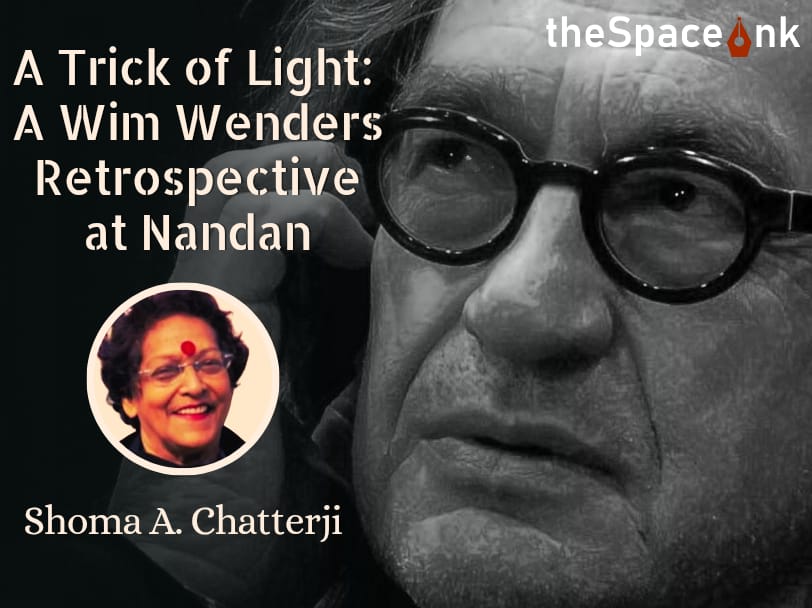Dark. Haunting. Ominous. Disturbing. Dystopian. Surreal. Somber. At once Devastated and Devastating. These primary emotions swept through the CIMA gallery Awards show 2022 at the now defunct Gem Cinema, the site of their triennial show since 2015. Though not themed, 183 artists from across India, representing 20 states, had their work displayed at Gem cinema and the CIMA gallery. The works featured at Gem done by artists in their thirties and forties, were in conversation as they navigated this formidable, unimaginable world in which we find ourselves. And they do so unflinchingly, unsentimentally, aware of the bleak future – COVID has transformed the world as we knew it.
The cavernous space of the abandoned cinema was once a venue for glossy, slick Hindi films. The movie house where once people gathered for pleasure is now stripped to its bare bones. We see the gaping wounds in the soaring roof. Peeling walls lay bare electrical fittings and wiring. No attempt has been made to disguise the ravages of time. All its comforts have been gutted – a skeletal version of its former self. A quintessential set for the forceful art installations that speak the unspeakable – the relentless devastation wreaked upon individuals, animals and the environment that reached an apex these last two years.

I present a few snapshots of the many powerful works to provide a sense of this unnerving and dramatic show. From the time one enters the lobby the large, foreboding wood, cane stick and iron, glass and stone work of Kanchan Karjee called Individual Space (where a man and woman face each other, mute and distant from one another) sets the tone. A few sparse belongings lie in the iron fenced circle. The couple are fixed and penned in from the world, a shared sentiment we have all experienced in these cooped up times.
As one ducks into what must have been the entry to the downstairs hall there is a very life-like wooden sculpture, Repeat, by Surojit Hazra. A man with bowed head, tattered vest, arms and feet bound, stands in the universal historic posture of an exploited labourer. The pedestal of hands, some raised in resistance and others that are pointing menacingly, links him to collective histories of oppression. His tattered vest makes him contemporary. Less monumental in scale, Ritesh Chandrakant Rajput’s Struggle, elegantly wrought in metal and stone intensifies the mood – the immense weight the riders surmount during this crisis of epic proportions.

For a very brief moment, as one mounts the stairs to the upstairs gallery, a touch of color and brightness is momentarily experienced In Hot Pursuit by Indrani Routh. Lit, colorful rockets suspended in air hotly pursue a flying projectile shaped Hanuman. The prevailing dark cloak of Covid muffles the temporary flicker of color as the desolation of Souvik Das’s earthenware Quarantine makes a statement. The lobby of the gigantic upstairs hall features several works directly addressing Covid, including the portentous Covid Warrior, etched by Jyotirmay Dalapati. Inky black and blue, the owl as sentinel, a yellow vapor rises and spreads across the landscape. Neeraj Singh Khandka’s Life in the Lockdown, a set of 8 woodblocks feature the patterns of everyday activities that do continue during Covid times. Adding the only other touch of color – bright red, parrot green – is a series of playful blocks, Quarantine Days of Durga by Anusri Saha. In these images Durga, too, is impacted. She does her daily shopping with her mask on as she carries fish in one hand, a cloth bag in the other.

Dominating the wall where the cinema screen would have been – the focal point of the large communal space – is Black Grave 2 by Suman Chandra, the CIMA Award winner. The audience would have sat together gazing at a moving image; we experience Black Grave individually as we make our way to the stage. This massive graphic work (96×336 inches, 2019) is composed of coal and brick dust, charcoal, acrylic, pen and ink on canvas. Blueprint of a Vanishing Landscape, a graphic at the side of this work provides the key to understanding how the transformation, the scarring of the landscape, has been relentlessly conducted. The extractive industries and mining activities that have hacked and hollowed out the Earth for our consumption are specified. The desolate and barren escarpment has only a few tiny birds upon it that signal life. This theme of environmental destruction precedes COVID, but continues unabated. Echoing this refrain is Soumen Mondal’s large mixed media slab, Aggressive Delta, forged with cloth, paper, natural fiber, resin and the branches of a tree.

Alongside the environmental degradation of the land and waters are the unspeakable destruction of people’s lives, especially of the farmers, as seen in Nishabd, by Chandrashekhar V. Waghmare. The damage to rural lives is unspeakable. The destruction of livelihood and people persists in numerous of the other pieces including Shelter 1, where a series of precarious crates are balanced atop each other. There is a rolled mat. This installation is rendered in terracotta by Jaladhar Naskar. Another searing image is that of a life-size goat, stuffed and stifled in a bag that is slung on the handlebars and rails of a bicycle. Towards the Last Journey by Santosh Kumar brought back searing images of the unimaginably difficult and courageous journeys migrant workers were forced to undertake as they set out for their villages during the hastily announced complete lockdown.
The show is a tribute to the vitality of the artists who confront the crisis we are experiencing with boldness, compassion and integrity. We all spent lockdown days trying to make sense of the unprecedented. Working individually they grappled with the overwhelming trauma of our time – isolation, the collapse of social and community safety nets, the acceleration of extractive labor processes exacerbating already precarious lives. Bringing their work together, in a collective space, (which we were unable to do) allows us to release our individual and collective pain and suffering. Poignant waves of distress followed me as I stepped out of the dark theater to meet a cold, sunlit, winter day.
Images used in this article were provided by the author.
Jael Silliman, born in Kolkata, was educated at Wellesley College, Mass., Harvard University, University of Texas, Austin. She received her doctoral degree in international education at Columbia University. She has written extensively on gender and economic development, and women’s movements in the developing world. 'The Teak Almirah', 'Where Gods Reside: Sacred Places of Kolkata', 'Jewish Portraits, Indian Frames: Women's Narratives from a Diaspora of Hope' are some of her published works.








